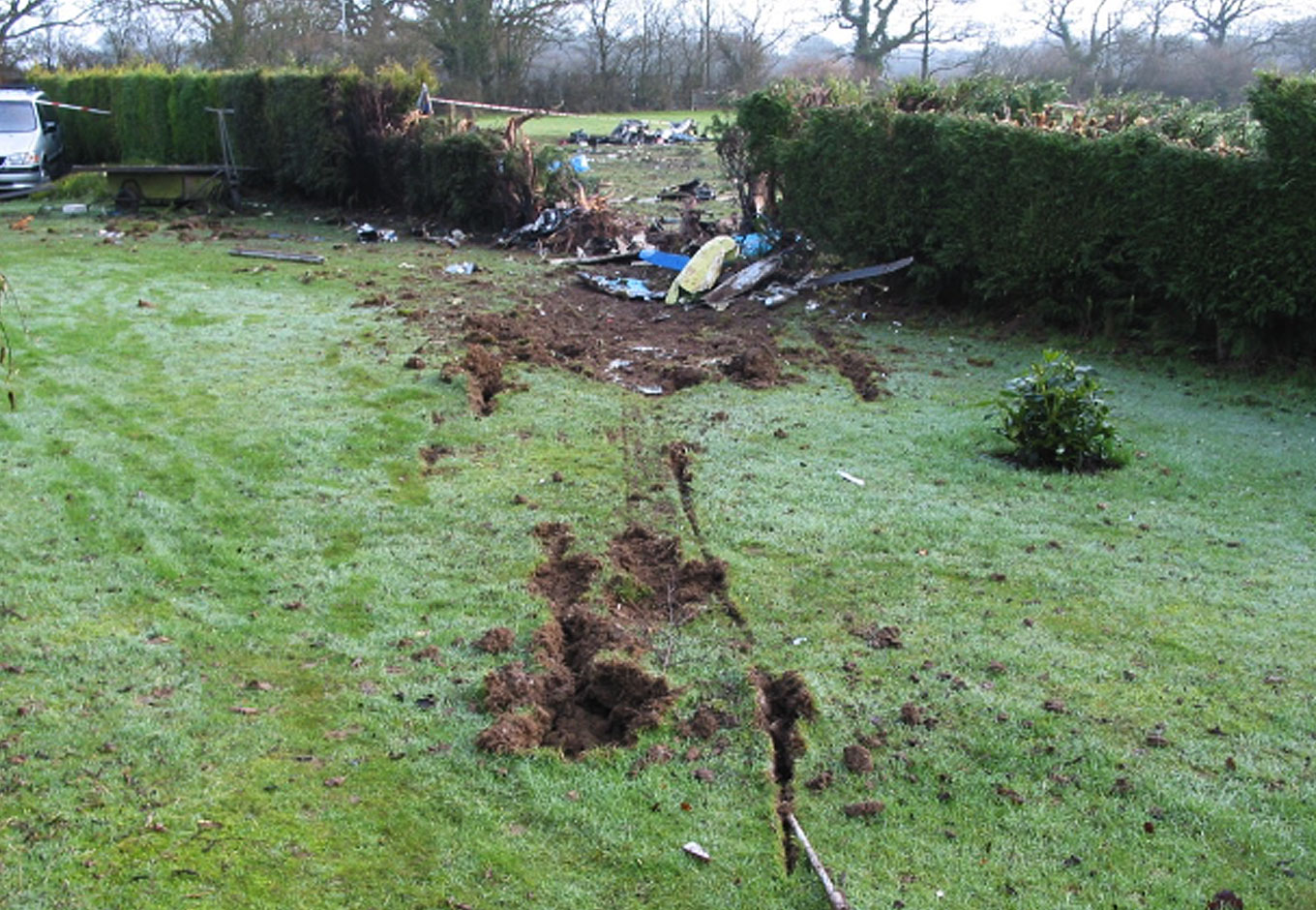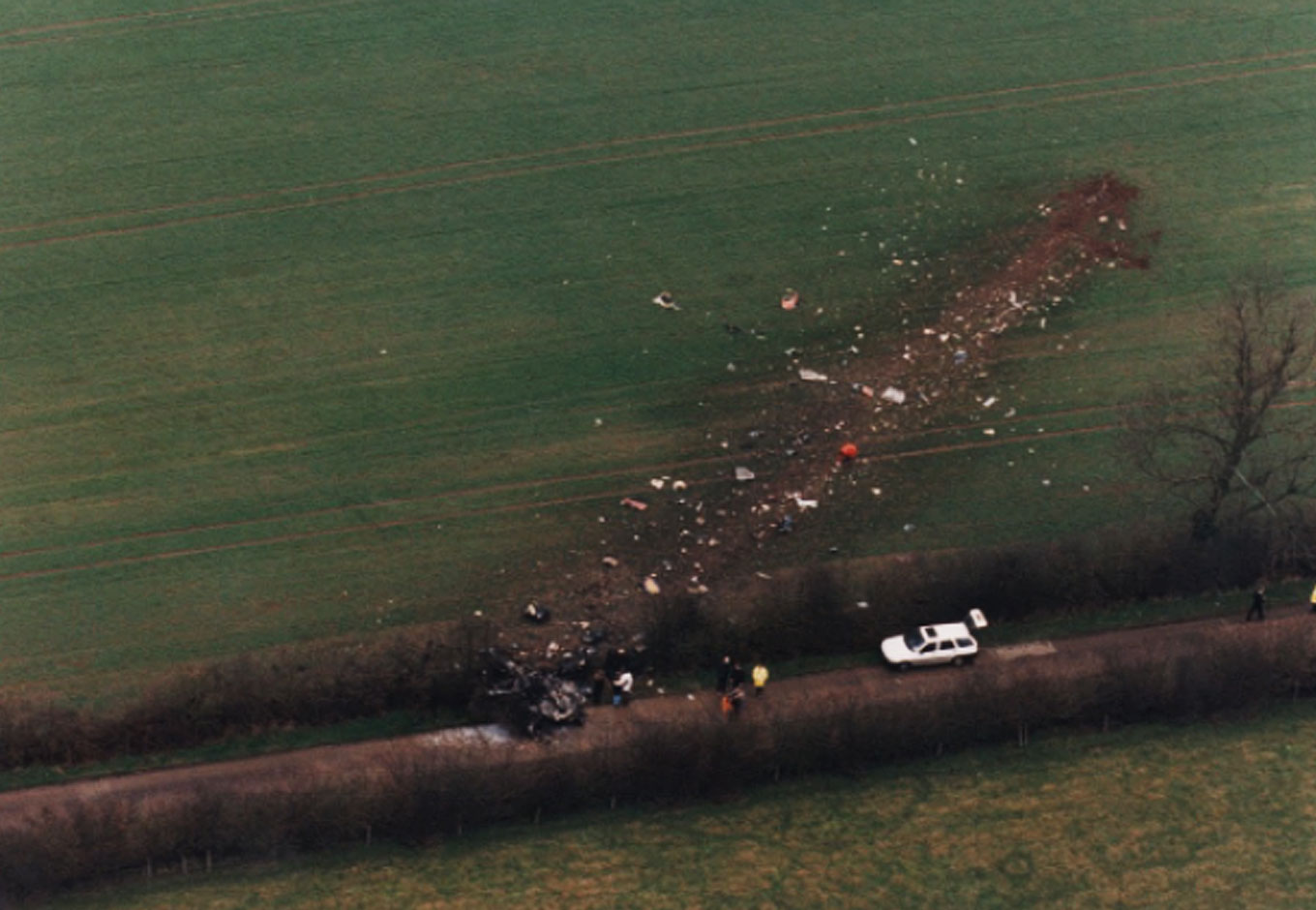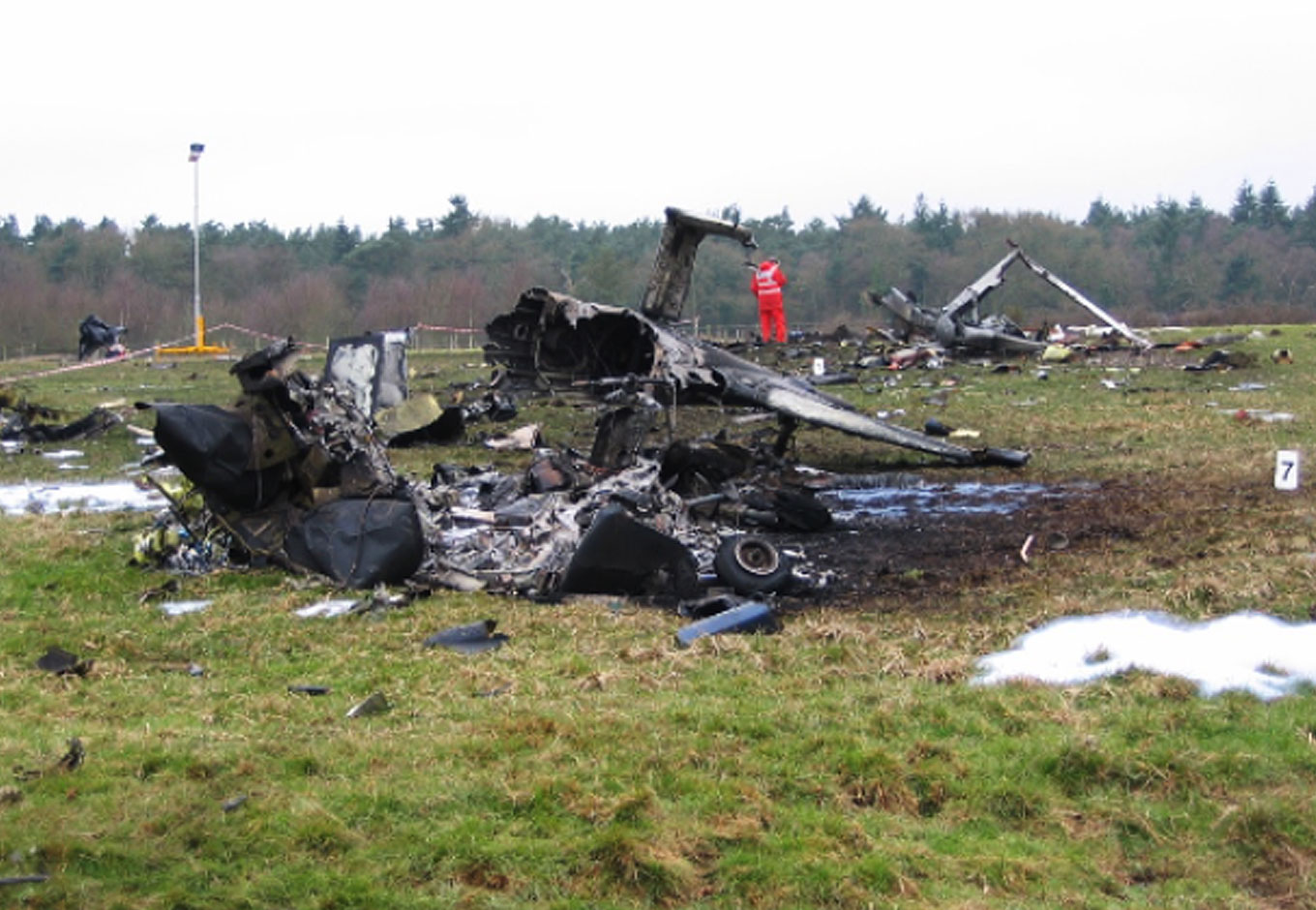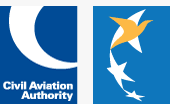Disorientation due to Inadvertent IMC usually results in high speed contact with the ground,
which results in a fatal accident!

The helicopter should be a reasonably good ‘bad weather avoidance’ flying machine due to its flight control versatility.
The pilot can slow down, descend in a considered manner, land or even hover taxi should the en route weather deteriorate into difficult flying conditions. Therefore, the helicopter should be a flying machine that has a very low fatal accident rate relating to weather.
So why is weather one of the leading causes of helicopter fatal accidents?
The Manufacturer:
If the helicopter manufacturer places a ‘This Rotorcraft Approved for Day and Night VFR Operations’ placard within the sight of the pilot in the cockpit, there will be an operational limitation placed in that helicopter’s Flight Manual (FM) or Pilots Operating Hand (POH), which states the same.
This operational limitation basically requires the pilot to fly the helicopter at all times (day or night) in Visual Meteorological Conditions (VMC), which means the conditions in which the pilot has sufficient visibility to fly the aircraft maintaining visual separation from terrain and other aircraft.
Visual Flight Rules (VFR) are only permitted in VMC.
The usual reason for the above is that the type with such a placard is not approved or equipped for flight in Instrument Meteorological Conditions (IMC).
When we say that the pilot should remain in contact with the ground at all times we mean visually, not by hitting it!
At night, orientation must be maintained by visual reference to the ground, including objects, via illumination solely by lights on the ground or adequate celestial illumination.
Robinson Helicopter Company in particular are excellent at disseminating flight safety information to their product pilots in their POH, which covers areas that have and continue to cause accidents. Weather is one such topic.
The idea is to learn from other pilots’ mistakes so that you do not have to make that mistake yourself. Read them regularly.
Do not blame the manufacturer, they give you limitations, disregard them at your peril!
In my view, ‘Spatial Disorientation’ caused by Inadvertent IMC is a self-induced emergency that is not in the manufactures ‘Emergency Procedures’ section.
WHY?
Because the ‘VFR only’ helicopter is not equipped, and neither are you. You have learnt to fly thanks to a flight instructor and not evolution!
So do not do it!
What About You?
Research indicates that pilots are an optimistic bunch and this optimism tends to lead the pilot to be over optimistic about their ability, including their ability to continue flying in deteriorating weather.
This optimistic view may be reinforced by previous encounters with bad weather where the pilot managed to press on successfully i.e. they survived.
This previous experience will often lead to positive feedback from a bad decision.
‘I have survived it before, so I know I can do it again’.
The helicopter industry adds to this ‘optimism’ by teaching that a few hours of ‘instrument familiarisation training’ will give the pilot sufficient skill levels to enable them to turn back should they lose outside visual references.
This is too late!
Gaining a ‘night rating’ can also add to this ‘optimism’.
“It’s ok as I have a night rating” has been said by pilots who are about to take-off in poor weather and/or late in the day which would mean they would be flying in the dark at some point.
A ’night rating’ is not in any way an IMC rating; the pilot is still required to fly in VMC
We teach the pilot to identify the incipient stages of critical flight conditions and how to avoid or recover from them. For example, we do not make them wait until the rotor stalls or wait until they have entered Vortex Ring State (VRS) before they recover.
So why do we not teach them the incipient stages of deteriorating/critical weather conditions in the same way?
It is no good teaching the pilot to only take action after they have lost outside visual references, which seems to be the current method, because although I think the helicopter is a good ‘bad weather’ avoidance platform, it is unforgiving due to its inherent instability and if the pilot should loose outside visual references it will generally result in disorientation with the inevitable loss of control.
Many years ago, I was told by the then UK CAA helicopter Test Pilot the difference between flying an aeroplane and a helicopter:
“The aeroplane pilot moves the flight controls in such a manner as to get the aeroplane to move in a direction that they wish to go. The helicopter pilot moves the flight controls to stop the helicopter moving in a direction it wishes to go!”
A Research Paper 2007/03 by the UK CAA titled ‘Helicopter Flight in Degraded Visual Conditions’ found, not surprisingly, that helicopters are difficult to fly at the best of times i.e. even in good visual conditions with plenty of outside world references and with stability augmentation.
The paper deals with ‘degrading visual cues’ and that as visual conditions degrade, control becomes complicated i.e. the pilot’s workload increases.
The report indicates that an inexperienced/average pilot would become disorientated and lose control as the visual cues degraded when flying a basic configuration helicopter.
That with basic aircraft, if speed was lost inadvertently, or a moderate manoeuvre was attempted, the helicopters inherent lack of stability will give rise to very high pilot workload and potential loss of control.
At this point I will remind you of a previous human factor I mentioned in an article some time ago that relates to what happens when the pilot is subjected to very high workloads.
As the CAA paper reported, degrading visual cues inevitably leads to high pilot workload and with the corresponding stress, the pilot’s brain and in particular the Limbic System region, will perceive this as a threat and trigger the release of Steroid Hormones, including adrenalin and the primary stress hormone cortisol, which marshal’s systems throughout the body to deal with the threat; increasing heart rate, blood pressure and blood flow etc.
Neurotransmitters are also released that will suppress (shut down) activity in areas at the front of the brain concerned with concentration, rational thought, short term memory and inhibition, thereby hindering the ability of the person to handle complex social or intellectual tasks and behaviours.
These mental events were critical in primitive times to allow the person to react quickly to the threat; ‘the fight or flight response’.
The pilot has no control over these mental events!
In short, the pilot will find that. as the stress reaction to the threat evolves, even simple tasks that they could carry out easily before the threat/stress occurred, become difficult if not impossible to perform. The pilot's situational awareness, verbal functioning, mental capacity, auditory functions etc. will be reduced and they will swiftly become ‘overwhelmed by events’, leading to a loss of control of the situation.
Peripheral vision, for example, is one of the functions that is reduced as the stress levels increase (tunnel vision), which means the pilot fails to see the weather closing in around them.
It is generally understood that the pilot’s ability to determine which way is up (orientation) is by information given by the following:
- The visual system
- The vestibular system (balance organs located in the inner ears)
- The proprioceptive system (‘seat of the pants’)
The above rely on various sensory receptors, which collect the information and send it to the brain, which under normal conditions results in a highly accurate model of orientation, which is the ability to perceive and adjust one’s location in space in relation to objects in the external environment.
Problem! The information provided by the three systems is not divided equally in their importance to provide correct orientation.
Circa 80% of the raw orientation information is provided by the visual system. The remaining 20% is split equally between the vestibular system and the proprioceptive system, both of which are prone to illusions and misinterpretation.
As the pilot’s visual references degrade, the pilot is forced into relying ever more on the 20% for their orientation information, which eventually will result in each of these remaining systems providing 100% of the orientation information split equally between them. This will usually end in disorientation and the subsequent loss of control with the ensuing fatal accident.
So, the pilot should clearly understand that the absent of good visual cues will deprive them of the vast majority of the necessary orientation information.
Disorientation/loss of control usually results in high speed contact with the ground or objects attached to the ground, which is nearly always fatal due to the impact speeds.
So why are we teaching the helicopter pilot to try and complete a 180 degree turn only when they lose outside visual references, when the CAA state in their research paper of 2007, that if a moderate manoeuvre is attempted at this point, the helicopter’s inherent lack of stability will give rise to very high pilot work load and potential loss of control?
As I have said, surely this is too late!
We should teach an exit point as the visual cues degrade and not a point after the loss of visual cues.
One of the many human factors associated with ‘continuing the flight in degrading visual conditions is the fact that humans are not very good at giving up an investment. In this case we are talking about the investment put into a flight, which is also referred to as ‘escalation of commitment’.
This is simply a human behaviour pattern in which the pilot, when facing increasingly negative outcomes from their decision, nevertheless continues their behaviour instead of altering course.
The longer the pilot has progressed into the flight, the more the investment is put into the flight and their decision to fly, the less likely the pilot will give up their investment, increasing the likelihood of the accident happening.
‘Get home-itis’ is a good example of ‘escalation of commitment’
Some of the factors that will impact on the ‘escalation of commitment’ will be personal traits, such as, self-efficacy and confidence, personal responsibility for the decision to make the flight, ego threat and the proximity to the completion to the flight.
In plain language ’self-confidence’, which studies show that pilots tend to be ‘overconfident’.
High speed impact with the ground after becoming disorientated is always fatal.

The pilot can mitigate some of the above by good flight planning and having a plan B or even a plan C i.e. an escape route.
If the pilot has not planned for alternatives, then they have nothing to call upon should plan A start to unravel. For example, if the pilot is not shown how to go around on a bad approach they will carry on with that bad approach and endanger themselves, their passengers, the aircraft and people on the ground. So, in this case the go around is plan B. The planning should also include a minimum in flight forward visibility and once it is decided, stick to it. If any part of the flight involves ‘night flying’ then any forecast weather on that sector should be a reason to cancel the flight as it is extremely difficult to see cloud or deteriorating weather at night.
If the pilot has already placed in their mind other courses of action and has a clear understanding of their personal limitations should in flight situations/conditions change, then they are less likely to continue with that flight.
It has to be understood by the pilot that it is better to arrive late than not at all and that most accidents could have been prevented prior to take off. In effect the pilot is failing to plan the flight with sufficient detail and/or making poor/bad decisions.
“If in doubt, there should be no doubt. Don’t go!”
If you are carrying passengers, their safety has to be taken into consideration.
Just because you might think the risk is worth taking, that does not mean the passengers should be subjected to that level of risk. You have a duty of care.
Talking about ‘risk’. There are two elements of risk:
- Risk Perception: The recognition of the risk inherent in a situation
- Risk Tolerance: The amount of risk a person is willing to accept in the pursuit of some goal.
Research suggests that it is risk misperception and not high-risk tolerance that is associated with exposure to hazardous aviation events.
Good, detailed planning will help expose some of the risks associated with the intended flight because, without knowing what the possible risks are in an intended flight, how can the pilot decide if the risk is worth taking?
Lose visual contact with the ground, lose your life. Disorientation is fatal.

During flight training we should expose the student pilot to the decisions and associated risk taking involved with determining/evaluating the particular flight exercise being considered, particularly the weather aspects that might/would prevent the successful outcome of the said flight exercise.
Let them get it wrong, which hopefully they will, and fly the exercise to show the student the implications of their error; how situations can deteriorate very quickly and how their work load goes up to a point of being unable to cope, ‘being overwhelmed by events’. Let them learn about ‘risk mis-perception’ whilst there is an instructor sitting with them rather than letting them find out on their own!
This is the same rule we apply with navigational exercises.
Hopefully the instructor tries to get the student into a position of being ’temporarily unsure of their position’ during navigational exercises so that the instructor can observe how the student reacts to the situation.
Again, it is best this happens when ’Sir’ is sitting next to them and not when they are out on their own!
It is still my opinion that we can greatly improve the accident statistics via training.
The pilots flying out there are a product of their instructor and the training environment.
My view is that perhaps teaching weather diversion might discipline the future pilot in their flight planning.
If it is ‘whether I should go weather’? It’s not whether, it’s never!’
